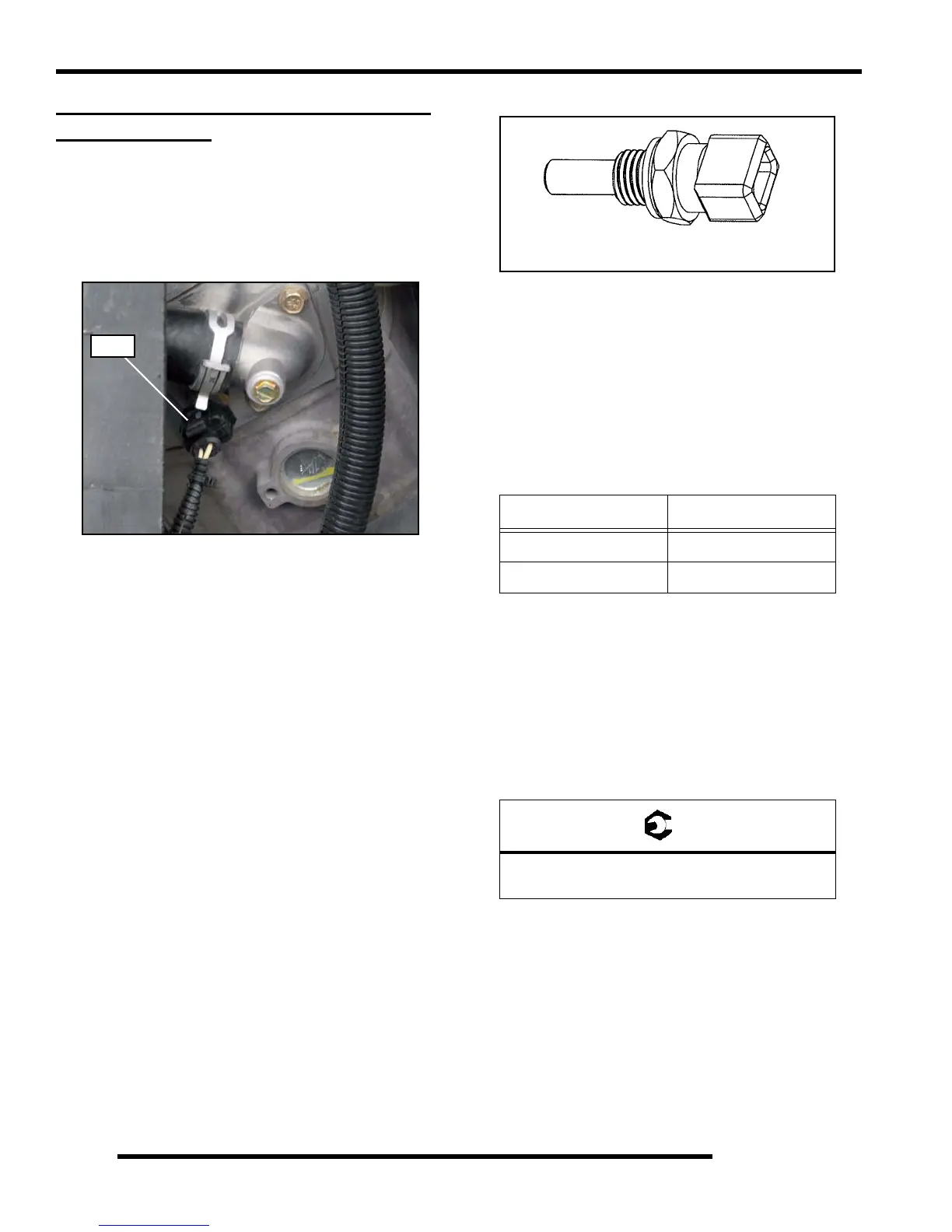4.30
ELECTRONIC FUEL INJECTION
ENGINE COOLANT TEMPERATURE
SENSOR (ECT)
Operation Overview
Mounted on the cylinder head, the engine temperature sensor
measures coolant temperature. The engine temperature sensor
is a Negative Temperature Coefficient (NTC) type sensor, as the
temperature increases the resistance decreases.
Coolant passes through the cylinder and by the sensor probe,
varying a resistance reading which is relayed to the ECU. This
signal is processed by the ECU and compared to its
programming for determining the fuel and ignition
requirements during operation. The ECU also uses this signal to
determine when to activate the fan during operation. If for any
reason the engine temperature sensor circuit is interrupted, the
fan will default to “ON”.
ECT Sensor Test
To quickly rule out other components and wiring related to the
ETS, disconnect the harness from the ETS. The fan should turn
on and ‘HOT’ should indicate on the instrument cluster. This
indicates all other components are working properly.
Refer to Chapter 10 for ECT testing. Polaris dealers can also test
the sensor by using the Digital Wrench™ Diagnostic Software
(dealer only). Refer to the Digital Wrench™ User Guide for
more information.
ECT Sensor Replacement
1. Drain coolant to level below sensor.
2. Disconnect sensor from engine harness.
3. Using a wrench, remove and replace the sensor, applying
a light coating of thread sealant to aid installation.
4. Torque the sensor to 17 ft. lbs. (23 Nm).
ECT
ECT Sensor Resistance Readings
Temperature ° F (° C) Resistance
68 ° F (20 ° C) 2.5 kΩ ± 6%
212 ° F (100 ° C) 0.186 kΩ ± 2%
= T
ECT Retaining Bolt Torque:
17 ft. lbs. (23 Nm)
Engine Temperature Sensor

